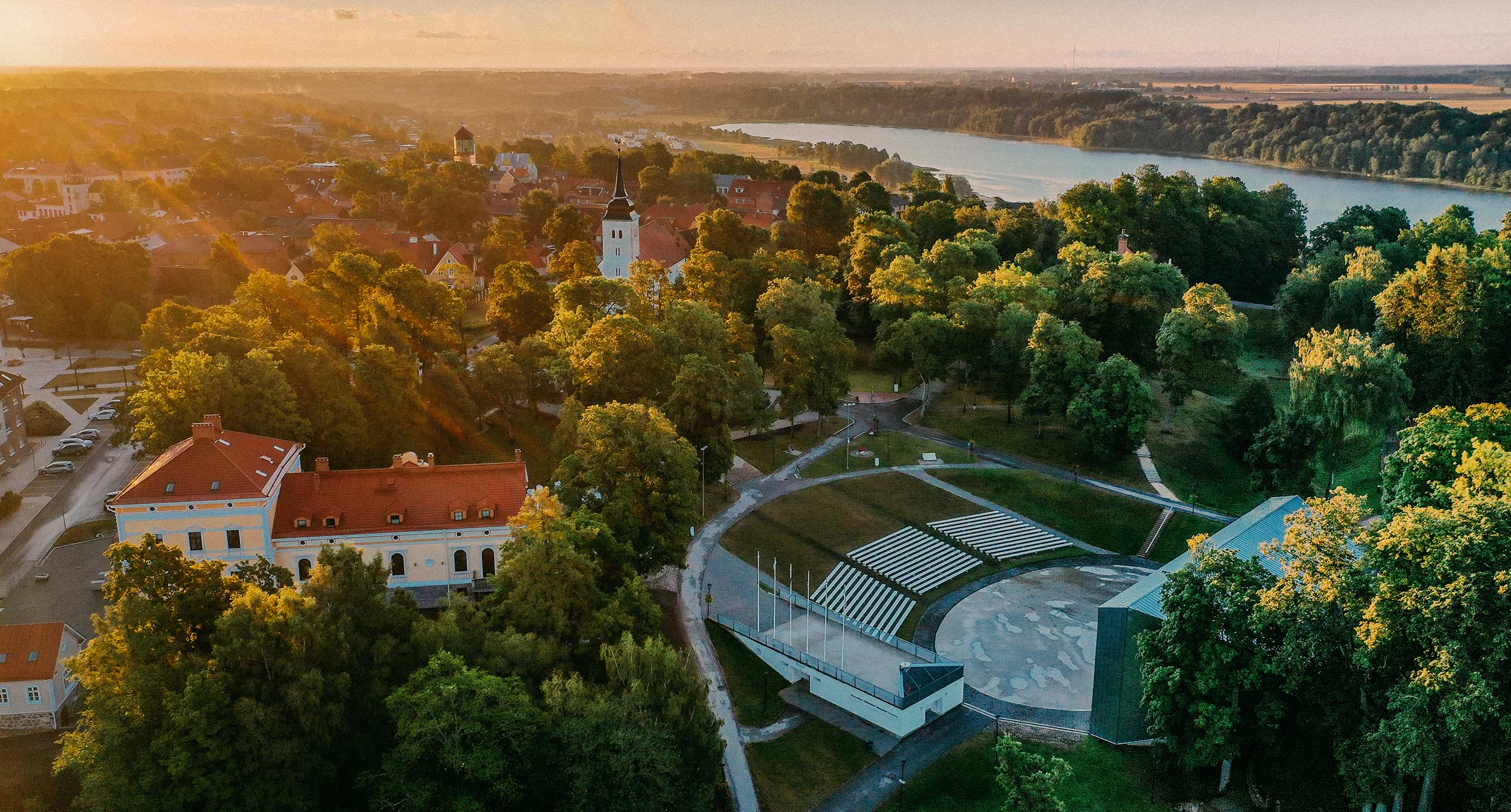
Discover Viljandi
The city of Viljandi and its surroundings offer a wide range of activities for culture lovers, history buffs, nature lovers, sports enthusiasts and families with children.

Viljandi Castle Hills
The ruins of Viljandi Castle and the park around it have been a beloved recreation area for the people of Viljandi since the beginning of the last century and are now a national monument. Built in the 13th century on the site of the Estonians’ stronghold, the Viljandi Castle took its full shape and size by the beginning of the 16th century, becoming one of the most prominent fortresses in Estonia and Latvia.
The first front stronghold is called Kaevumägi, the second front stronghold is called Second Kirsimägi and the third front stronghold is called First Kirsimägi. Concerts and sporting events are held on the castle hill, which offers a beautiful view of Lake Viljandi. In order to reach the castle hills from the town, a suspension bridge was installed in 1931 in a 13-metre-deep ditch at Kaevumägi.

Old Water Tower
J. Laidoner's Square 5c, Viljandi
Viljandi was one of the first towns in Estonia to get water and sewerage. Completed in 1911, the 30-metre-high water tower made of red brick and an octagonal wooden top and used today as a lookout tower. The three floors of the tower house a permanent exhibition, as well as various travelling exhibitions. The water tower is an important part of Viljandi’s skyline as a city of towers, offering a beautiful view of Lake Viljandi and the old town.

Museum of Viljandi
J. Laidoneri plats 10, Viljandi
The Museum of Viljandi is in an old pharmacy building, with a permanent exhibition on two floors covering the history of Viljandi up to the mid-20th century, and temporary exhibitions of various kinds. A rich collection of archaelogical finds gives an insight into the prehistoric period. The medieval period is represented by a model of Viljandi Order Castle, together with artefacts from that period. Before visiting the castle ruins, it is a good idea to have a look at the model. Folk culture is introduced by a large-scale model of a hermitage and a display of folk costumes and jewellery.

Heimtali Museum
Heimtali, Viljandi parish
The museum is housed in Heimtali’s old village schoolhouse, a beautiful country building from 1864. The permanent exhibition of the Heimtali Museum’s multi-layered collection includes school furniture from a hundred years ago, old documents and tools from the surrounding area. The collection of folk textiles is particularly rich, as is the library of folk art, folklore and decorative arts. The children’s playroom has a range of cats, dogs, piglets and other domestic animals knitted in clove patterns. The permanent exhibition is curated and designed by textile artist Anu Raud.

Olustvere Manor
Mõisa Street 12, Olustvere
Olustvere Manor, with a history going back several hundred years, is now a tourist centre, with a variety of chambers for workshops are set up in the manor buildings: blacksmith, craft, linen and cloth, ceramics and glass, bakery and stable building. The latter also houses Voldemar Lucht’s miniature collection of wooden horses and Ilmar Tilga’s collection of bird and animal prints. Guided tours of the Olustvere manor complex.

The Mulgi Experience Centre
Sooglemäe, Ala, Tõrva parish, Valgamaa
The Mulgi Experience Centre introduces the heritage and history of Mulgimaa, in a traditional way and smart modern solutions - stories, customs, mythology and folklore. There are activities and things to see for children and adults alike.